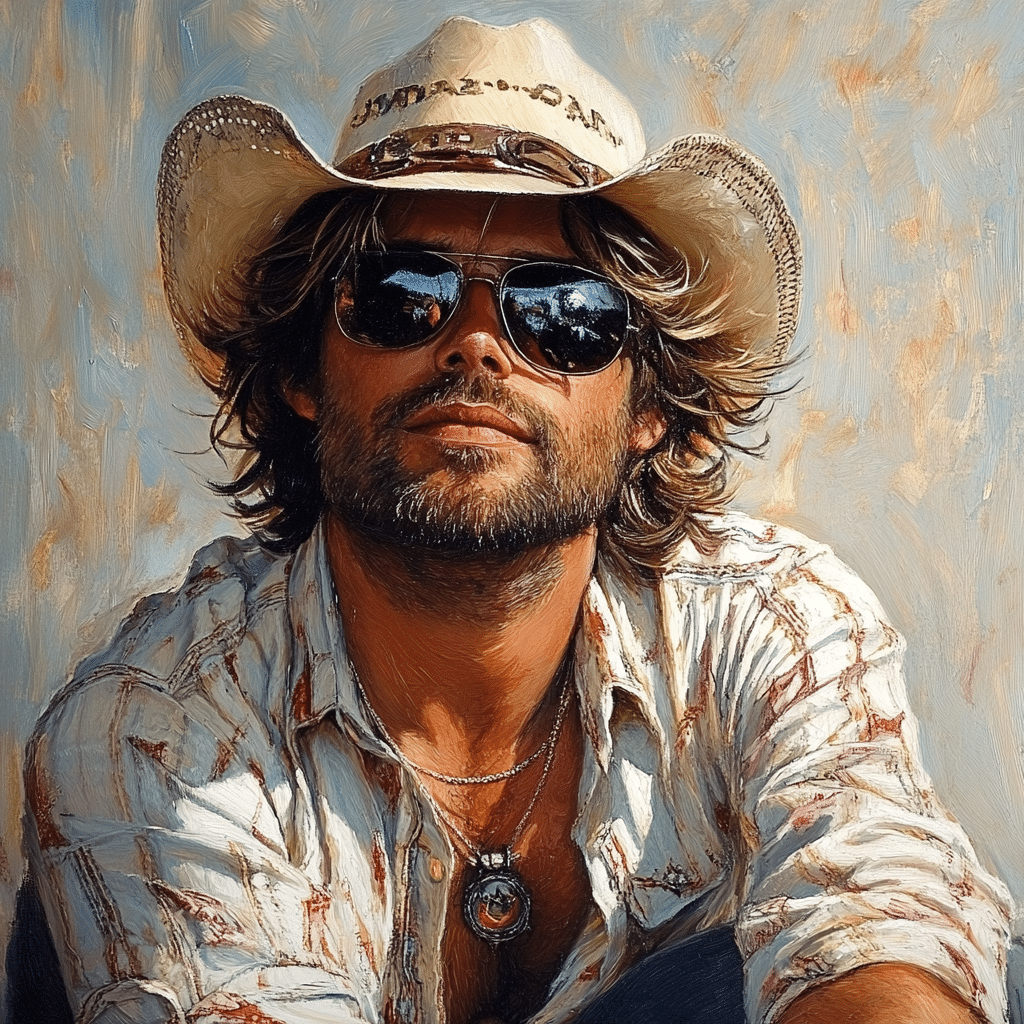Unmasking the Attitude Era: A Deep Dive into Wrestling’s Most Defining Epoch
The Attitude Era, a term that paints golden pictures for avid wrestling fanatics, remains a headlining focal point in the history of professional wrestling. Precursor to the brash and boundary-pushing era was the PG-rated wholesome and family-oriented era. However, the onset of the Attitude Era around 1997 marked a drastic shift from the usual programming, as the World Wrestling Federation (WWF) now flirted with edgy and grittier storylines, of violence, sex, and street-gang dynamics. Here’s a look back at this audacious era and its adrenaline-rushing journey.
Emergence of the Attitude Era
The attitude era was a strategic move by the WWE to revamp its personality to contest with WCW during the legendary Monday Night Wars. Its inception is etched on November 9, 1997, leading to an era of unprecedented popularity for the sport.
Unwrapping the Evolution of the Era
Incidentally, the ‘attitude era’ was WWF’s version of ECW, albeit without F Bombs. This era took the gloved hand off and pro wrestling started donning the fangs. Staging luridly violent and sexual matches, faction rivalry that mirrored street gangs, and wrestlers morphing into characters from a Quentin Tarantino plot, WWF enticed hordes of viewers to its ringside.
The Major Players and Showpieces that Heralded its Start
Chief advocates of the attitude era were the electrifying superstars who transcended in-ring entertainment to a battle of characters that fans could resonate with. Perhaps, the most illuminating star was “Stone Cold” Steve Austin, whose face-off with the authoritarian figure of Vince McMahon emulates perfectly the rule-bending defiance that marked this era. March 29, 1998 – WrestleMania XIV, Austin gained victory against Shawn Michaels for the WWF Championship, leading some fans to term the Attitude Era as the Austin Era.
Critical Analysis of Attitude Era’s Influence on Wrestling’s Popularity
How the Attitude Era Transformed Wrestling
Before the Attitude Era, the wrestling was akin to a stepped-down superhero universe. Post 1997, it felt more like a gym brawl with a protein bowl as the prize. Raw, real, but rampant, the era attracted criticisms, and yet, it was these controversial aspects that catapulted wrestling to an unknown zenith of popularity.
Ramp-up of Audience Engagement During this Era
It was during this era that wrestling began blurring the lines between fiction and reality. It was more immersive, and the viewer felt every chop, every piledriver with the wrestlers. Speaking purely from an audience engagement perspective, the attitude era delivered an intoxicating cocktail of raw emotion designed to draw bigger audiences.
The Attitude Era vs. Modern Day Wrestling: A Comparative Exploration

Defining Characteristics of Attitude Era Wrestling
The Attitude Era was distinctive in its appeal. It was a bold and captivating contrast to the relatively staid wrestling scenarios of previous times.
The Unique Elements and Creatives of the Period
From dramatic entrances to pulsating match-types like the Hell in a Cell, TLC (Tables, Ladders & Chairs) and the irrepressibly brutal Hardcore matches – the creatives during the attitude era were boundary-breaking. Edgy overtones, unabashed script-writing, and a substantial increase in violence set the tone of matches.
Role of Controversies and Bold Storylines
Controversies and storyline twists were foundational pillars of this era. These shocking elements, which would overshadow the actual wrestling in some cases, were instrumental in shaping the characters that would dominate the WWF landscape like The Rock or, a Kane.
Modern Day Wrestling: A Departure from Past?
Major Changes Since the Attitude Era
After a high-octane rush of the Attitude Era, modern-day Wrestling has made significant strides. Most believe that the period post-WrestleMania 17, when Austin turned heel and WCW went under, marked the decline of Attitude Era. The shift is now more towards establishing in-ring supremacy, and a conspicuous dip in the sex, drugs and shock factors. Instead of the character-driven script, contemporary wrestling is more about technical wrestling acumen.
The Rise of a New Wrestling Audience
There’s a new generation of wrestling fans swept by the waves of change. These new-age fans, unlike those of the attitude era, are not pounding fists when Jesús Alfredo Guzmán Salazar is smacking down his opponent; they are more into character development and in-ring quality. These are the fans who define the commercial success of modern-day wrestling.

| Subject | Description |
|---|---|
| Start and End of the Attitude Era | Started on November 9, 1997, and officially ended on May 6, 2002. |
| Notable Changes | The WWE shifted its personality to compete with WCW during the Monday Night Wars, introducing more edgy, gritty content with increased violence, sex, and street-gang themes. |
| Famous Personalities | Stone Cold Steve Austin, The Rock, and Bret Hart were among the biggest names consistently featured. The Rock, regardless of face or heel, would constantly contend for the Intercontinental Championship or the WWE title. |
| Significant Events | The official commencement of the Attitude Era is marked as March 29, 1998, the date of WrestleMania XIV, where Stone Cold Steve Austin defeated Shawn Michaels for the WWF Championship. |
| Company Symbol During the Era | The WWF Attitude scratch logo was used from November 9, 1997 until May 6, 2002. |
| Decline | The decline of the Attitude Era is largely attributed to WWE’s decision in the main event of WrestleMania X-7 to make Steve Austin heel. Many also link it to the folding of WCW, coupled with Austin turning heel, leading many fans to leave. |
| Legacy | The Attitude Era is remembered for its dramatic transformation in content and the iconic storylines and personalities it brought to the forefront. Stone Cold Steve Austin is often deemed the face of this era and sometimes it is even referred to as the Austin Era. |
Iconic Stars and Legacy of the Attitude Era
The Flag Bearers of Attitude Era
Stars of the Attitude Era were a unique breed who carved out a niche for themselves. They brought a swagger, charisma, and rebelliousness reflected in their wrestling art forms.
Chronicling the Rise of Wrestling’s Biggest Stars
The Attitude Era gave rise to some of the most charismatic and successful figures that the wrestling world has ever seen. The most shining examples include names like “Stone Cold” Steve Austin and the “The Rock” who have left an indelible mark on the history of wrestling.
Exploring Their Unique Roles in the Attitude Era
Every major wrestler of the Attitude Era had their unique story, character development, often encased in controversy. In fact, modern-day wrestling owes much of its popularity to these superstars.
Assessing the Impact of the Attitude Era on Today’s Wrestling Stars
Influence on Wrestling Style and Persona of Modern Stars
While modern wrestling may not elicit the same effervescence as the Attitude Era, its influence can still be seen in the style and persona. The flamboyance and brazen disregard for the rules are still a characteristic of a few modern wrestling stars.
Key Learnings from the Golden Age
The biggest takeaway from the Attitude Era is its audacity to tread forcefully into uncharted territories. Today’s wrestling landscape is a balanced act between the high-risk factors of the Attitude Era and the authentic wrestling of yesteryears.
The Attitude Era Revisited: Wrestling Fans’ Changing Perception
The Attitude Era, in many ways, carried the DNA of its fandom.
Wrestling Fan Cultures: Pre and Post Attitude Era
Investigating Shifting Dynamics in Fan Engagement and Loyalty
There’s no denying that the fans of the Attitude Era were of a different cut, and their loyalty was largely unparalleled. The fans were “in it to win it”, whether it was betting their pennies at a dog park near me over who’s the better wrestler, or prepping themselves with Alaya collagen before a wrestling match telecast.
Insights on Current Fan Attitudes Towards the Attitude Era
‘Nostalgia is a seductive liar,’ says George W. Ball, and there’s truth in those words. While “attitude era” is a period fondly remembered, there’s no denying that it was a product of its time and might not align well with the views of contemporary audiences.
Exploring the Future: Will Attitude Era Make a Full Circle?
Predicating Future Trends in Wrestling Respective to the Attitude Era’s Influences
The question remains – will there ever be a full circle? Could there be a resurgence of an era as audacious as the Attitude one? As the popularity of wrestling continues to surge, answering such questions requires a ringside seat in the future.
Wrestlemania and the Remnants of the Attitude Era
The spirit of the attitude era is not totally extinct; it lives on in events like Wrestlemania, where shades of the audacious, unrestrained, and wild wrestling magic conjured by the Attitude Era can still be seen.

Beyond the ‘Three Count’: An Insightful Wrap on Wrestling’s Golden Age
Reverberations of the Attitude Era in Wrestling’s Landscape
Culmination of Significant Impacts on Wrestling.
In many ways, the Attitude Era was a turning point – it forced wrestling to reimagine its boundaries, question its limitations, and ultimately led to the glorious pinnacle it stands on today.
Thoughtful Reflection on the Attitude Era’s Global Influence
The Attitude Era has been about raising bars and pushing limits, leaving a global legacy that continues to reverberate within the sport today.
Wrestling with Nostalgia: What Fans Miss About the Attitude Era
There’s something about the ‘golden days’ that today’s wrestling occasionally yearns for. Perhaps it’s the reckless abandon, volatile feuds, or the sheer raw brutality that was the Attitude Era.
Exploring Fans’ Yearning for the Attitude Energy
Fans miss the unpredictability, the characters that got their pulse racing, and narratives that demanded attention. There’s no Anita Herbert bench pressing your attention away from the ring – such was the charisma of the Attitude Era’s entertainers.
The Attitude Era: Lost but not Forgotten
The Attitude era might be a past chapter, but its influence shines bright in this continuing wrestling story. Its audacious spirit lives on in the hearts of wrestling fans worldwide, making it a nostalgia-infused, unforgettable part of wrestling history. In conclusion, while the age might have passed, its essence has seeped deep into the roots of wrestling and keeps on shaping its future.
Why is it called Attitude Era?
Why is it called Attitude Era?
Well, folks, it’s called the Attitude Era because, quite frankly, everyone in those times was flaunting some serious attitude! This feisty period in WWE history, during the late ’90s and early ’00s, was all about characters oozing serious swagger, audacious storylines, and a real “in-your-face” approach to entertainment. Simply put, it was dripping with attitude, and thus the era was rightfully baptized.
Why did WWE end Attitude Era?
Why did WWE end Attitude Era?
Oh boy! WWE decided to wrap up the Attitude Era because the landscape of broadcast television was changing. With societal norms shifting towards a more family-friendly content, they wanted to make sure their product was suitable for all, inadvertently kicking off the PG Era.
Why was the Attitude Era so great?
Why was the Attitude Era so great?
Good question! Many hold the Attitude Era dear, and it’s no wonder – it was a time of thrilling wrestling, captivating storylines, and unforgettable characters. The charm lay in its unpredictability and raw intensity; from Stone Cold’s relentless rebellion to The Rock’s electrifying charisma, it was a time when anything could happen, and that made it undeniably fabulous!
Where did the Attitude Era start?
Where did the Attitude Era start?
Picture this; it was December 15, 1997, Monday Night Raw. Vince McMahon addressed the audience with a groundbreaking speech, signaling the start of the Attitude Era. It was the rise of an edgy, controversial, and groundbreaking phase in pro wrestling history, heralded by McMahon himself.
Why doesn t WWE bring back the Attitude Era?
Why doesn’t WWE bring back the Attitude Era?
Believe me, you’re not alone in asking this! But with WWE now a publicly-traded company, there’s a need to appeal to a broader, more family-friendly demographic. Moreover, reintroducing a risqué era like the Attitude Era could risk damaging relationships with advertisers, networks, and sponsors, and boy, we wouldn’t want that, would we?
What ended the Attitude Era?
What ended the Attitude Era?
Bummer! The Attitude Era drew to a close when WWE began focusing on more kid-friendly content as part of their rebranding into the Ruthless Aggression Era. Think of it like a reality TV show crossing over into a family drama – things change!
Why was WWF renamed to WWE?
Why was WWF renamed to WWE?
Ah, you see, it’s all about branding. Back in 2002, the World Wildlife Fund (also abbreviated as WWF) won a legal battle against the World Wrestling Federation over the WWF trademark. As a result, the World Wrestling Federation was left with no choice but to rebrand itself as World Wrestling Entertainment, or WWE as we know it now.
When did the rock leave WWE?
When did the Rock leave WWE?
Tough pill to swallow, eh? Dwayne “The Rock” Johnson officially said farewell to WWE in 2004 to focus full-time on his blossoming acting career. Although he’d occasionally return for special appearances, that was the beginning of The Rock’s transition from wrestling ring to silver screen.
Was ruthless aggression better than attitude era?
Was ruthless aggression better than the Attitude Era?
Well now, that’s a matter of perspective! Some fans unabashedly loved the rebellious, boundary-pushing Attitude Era, while others appreciated the talent-focused, competition-driven Ruthless Aggression Era more. Tomato, to-mah-to!
How many viewers did WWE get in the Attitude Era?
How many viewers did WWE get in the Attitude Era?
Listeners, hold on to your hats! At the height of the Attitude Era, WWE was raking in an average of around 5 to 6 million viewers per episode. Yes, indeed, it was a golden period for wrestling in terms of viewership.
Will WWE go back to TV-14?
Will WWE go back to TV-14?
Honestly? It seems unlikely. With WWE’s newer, more family-friendly branding, venturing back to TV-14 seems like a tall order. I mean, never say never, but with the current business model, it feels like a bit of a long shot.
Is WWE as popular as it used to be?
Is WWE as popular as it used to be?
Boy oh boy, that’s a loaded question. While some fanatics might argue that the glory days are behind us, WWE remains a global phenomenon with millions of fans worldwide. It may have evolved drastically from the Attitude Era, but it still holds a prominent position in the world of sports entertainment.
Who was the face of the Attitude Era?
Who was the face of the Attitude Era?
Now, that’s a no-brainer! Stone Cold Steve Austin, with his powerful persona and rebellious antics, is often seen as the face of the Attitude Era. Winning over fans with his rowdy personality and his feud with boss Vince McMahon, he personified the rebellious spirit of the time.
Who started nWo?
Who started nWo?
Get ready for this – nWo, short for New World Order, was a brainchild of Eric Bischoff, made famous in WCW. The faction was initially led by “Hollywood” Hulk Hogan, Scott Hall, and Kevin Nash, who wreaked havoc and reshaped wrestling history.
Is WWE PG era over?
Is WWE PG era over?
Well, it’s hard to say. While WWE has made some steps towards more mature content here and there, it’s still pretty much in line with the PG (Parental Guidance) rating. So to answer the question, no, the PG era isn’t officially over.
Was ruthless aggression better than Attitude Era?
Was ruthless aggression better than the Attitude Era?
Deja vu, right? As I mentioned before, that’s a matter of personal preference. Some fans may prefer the daring, controversial Attitude Era, while others are more inclined to the intensely competitive and talent-rich Ruthless Aggression Era.
Did DX start the Attitude Era?
Did DX start the Attitude Era?
No siree, while Degeneration-X or DX certainly played a pivotal role in defining the Attitude Era with their antics, it was really Vince McMahon’s infamous speech on December 15, 1997, that sewed the seeds of the Attitude Era.
Who started the ruthless aggression era?
Who started the ruthless aggression era?
Good question! The Ruthless Aggression Era, often characterized by John Cena’s debut and his challenge to Kurt Angle, happened under the leadership of Vince McMahon. Cena’s brass, “ruthless aggression” was symbolic of the era’s emphasis on individual achievement and intense competition.
What was the best year in the Attitude Era?
What was the best year in the Attitude Era?
Wow, talk about picking favourites! The Attitude Era spanned several glorious years, but 1998 stands out to many fans, ringing in iconic moments like Stone Cold versus McMahon, the rise of The Rock, and the Undertaker versus Mankind Hell In A Cell match. Now, wasn’t that a rollercoaster ride?






























